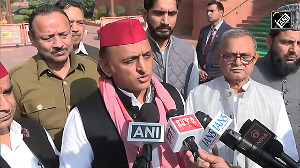'Tata Steel will continue pruning debt after surpassing the $1 bn goal, while keeping an eye on profitable and value-added growth.'

Tata Steel delivered one of its best financial performances ever in the third quarter of the current financial year, and surpassed its deleveraging target of $1 billion.
In an interview, Koushik Chatterjee, executive director and chief financial officer, Tata Steel, tells Ishita Ayan Dutt that the company will continue to focus on deleveraging but profitable and value-added growth will be equally important.
How do you read the commodity cycle and what is your expectation in the near future?
Globally, commodities have recovered very sharply from the lows of the pandemic in April 2020 on the back of a weak dollar, the liquidity triggered demand for commodities, supply constraint in the industry, the strong demand pull in China over the recent quarters and the broad based demand recovery post the peak of the pandemic.
If you look at the economic stimulus globally across countries it has been very significant as a percentage of GDP.
This liquidity induced demand has resulted in increase in most of the commodity prices globally and several analysts have a hypothesis that this cycle looks to be a stronger and longer than the previous cycles.
Tata Steel reported its highest ever consolidated EBITDA in Q3, what is the outlook on Q4?
Our underlying performance has been very strong during the last quarter and we have improved further from the recovery in the second quarter.
The near-term outlook on the demand side remains fairly strong and we continue to focus on cost take outs, improvement of the product mix including launching new grades, better working capital management and focused capital allocation.
Our margin momentum and cash flow generation continues to be strong and I expect that to continue in Q4.
And we will continue to deleverage further during the fourth quarter and bring down the gross debt further as guided of more than Rs 12,000 crore.
This year Tata Steel has over achieved its debt reduction target of $1 billion. So what would be the focus for Tata Steel next financial year – growth capex or debt reduction?
Our focus on free cash flows and getting to the optimum capital structure is strategically very important and that will continue in the future.
As you can see, even in a year impacted by Covid, our financial risk management focused sharply on the free cash flows and we have utilised the opportunity to deleverage in a accelerated manner.
Having said that, it is equally important for us to focus on profitable and value-accretive growth and we have started to allocate capital on organic growth especially on completion of the cold rolling mill and the pellet plant in Kalinganagar.
Both are margin expansionary and will be completed in the next 12-15 months.
We will also start providing capital for the commencement of the upstream expansion execution of Kalinganagar of 5 mtpa from FY 2022 onwards.
So it is not about growth vs debt but to have a clear priority of capital allocation and follow that up with relentless execution.
As India market has recovered what is your strategy on growth in India? And will you participate in the privatisation?
Growth in India is an important strategic foundation of the company and we will continue to focus on growth in India, not just on volume growth but also on value growth from extended product mix and differentiated platforms to serve customers better.
We see growth more holistically as part of our business strategy and the choice of organic vs inorganic depends on the fitment of the underlying assets to our strategy.
Once the assets or business fits our strategy and the risk and opportunities identified, then the decision to allocate capital for the acquisition becomes fundamentally clear.
So we will look at assets that may be available but similar lens will apply.
Unlike organic growth, acquisitions tend to bloat the capital structure and takes some time to ease out once the integration happens.
The decision to acquire Bhushan Steel or the steel business of Usha Martin in recent years are case in point and they have integrated very well.
We have actually been able to consistently reduce the acquisition debt in both companies with disciplined cash flow prioritisation.
Tata Steel Europe continued to disappoint despite high steel prices. Did Indian operations have to extend cash support?
Operationally, our European business has been stable the past few quarters and the underlying performance has also improved sequentially from Q1 to Q3.
The financial results were impacted by carbon provisions and other one-offs and with better felt spreads in Q4, we should see better performance.
We haven’t extended any direct funding support yet this year and the local management has garnered the financial resources to sustain the business.
Photograph: Danish Siddiqui/Reuters











